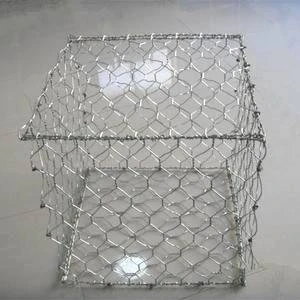
Dec . 28, 2024 03:40 Back to list
welded wire gauge chart
Understanding the Welded Wire Gauge Chart A Comprehensive Guide
Welded wire mesh has become a staple in various construction and fencing applications due to its strength, versatility, and durability. One of the most crucial aspects of working with welded wire mesh is understanding the wire gauge, which is a measure of its thickness. The wire gauge can affect the material's strength, appearance, and suitability for specific applications. This article will explore the welded wire gauge chart, helping you make informed decisions for your projects.
What is Wire Gauge?
Wire gauge refers to the diameter of the wire used in welded wire mesh. Different gauges correspond to different wire diameters, and each gauge number reflects a specific thickness. In general, a higher gauge number indicates a thinner wire, while a lower gauge number corresponds to a thicker wire. The most commonly used wire gauge system is the American Wire Gauge (AWG), which provides a standardized method for measuring wire thickness.
Reading the Welded Wire Gauge Chart
A welded wire gauge chart typically lists the wire gauge alongside the wire diameter in both inches and millimeters. It may also provide additional information, such as the tensile strength and weight per unit area. This information is vital for selecting the appropriate wire mesh for your specific needs.
For example, a 14-gauge wire has a diameter of approximately 0.0781 inches or 2.0 millimeters. In contrast, a 6-gauge wire has a much thicker diameter of about 0.1920 inches or 4.9 millimeters. Consequently, the 6-gauge wire is significantly stronger and more suitable for heavy-duty applications, such as animal enclosures or industrial fencing. In contrast, 14-gauge wire may be more suitable for lighter applications, like garden fencing or temporary barriers.
Applications of Different Wire Gauges
Understanding the various wire gauges and their applications can help you choose the right mesh for your project
- 16-Gauge Wire Suitable for light residential fencing, landscaping, and garden beds. It offers a balance of strength and manageability. - 14-Gauge Wire Commonly used in residential and commercial applications, including security fencing, animal enclosures, and light industrial uses. Its moderate thickness allows it to withstand moderate impact while remaining easy to work with.
- 12-Gauge Wire Often used in heavy-duty applications like livestock fencing, manufacturing, and construction sites. This thickness ensures durability and resistance to bending or breaking.
welded wire gauge chart

- 10-Gauge Wire Ideal for high-security solutions, such as prisons or military facilities, where strength and durability are paramount.
- 8-Gauge Wire and Thicker Primarily used in industrial applications requiring maximum strength and resistance to wear and tear.
Factors to Consider When Choosing Wire Gauge
When selecting the appropriate wire gauge for your welded wire mesh, several factors should be considered
1. Purpose Determine the primary function of the mesh, whether it's for security, aesthetics, or containment. The intended use will guide your choice of wire gauge.
2. Environmental Conditions Consider the exposure to weather elements, corrosive substances, or physical impact. Thicker wires are typically better for harsh environments.
3. Budget Higher gauge wires can be more cost-effective, but it's essential to balance cost with the required strength and durability.
4. Installation Consider the feasibility of installation. Thicker wires may require more robust tools and equipment, adding to the overall cost.
Conclusion
Understanding the welded wire gauge chart is essential for anyone involved in construction, fencing, or landscaping projects. By familiarizing yourself with the different gauge options and their corresponding applications, you can make educated choices that will enhance the durability and effectiveness of your installations. Remember that selecting the right gauge not only ensures the safety and functionality of your project but also contributes to its longevity and aesthetic appeal. Always consider your specific needs and circumstances before making a decision, and don’t hesitate to consult professionals if you have any uncertainties about your choices.
-
Why a Chain Link Fence is the Right Choice
NewsJul.09,2025
-
Upgrade Your Fencing with High-Quality Coated Chicken Wire
NewsJul.09,2025
-
The Power of Fence Post Spikes
NewsJul.09,2025
-
The Best Pet Enclosures for Every Need
NewsJul.09,2025
-
Secure Your Property with Premium Barbed Wire Solutions
NewsJul.09,2025
-
Enhance Your Construction Projects with Quality Gabion Boxes
NewsJul.09,2025
Products categories











